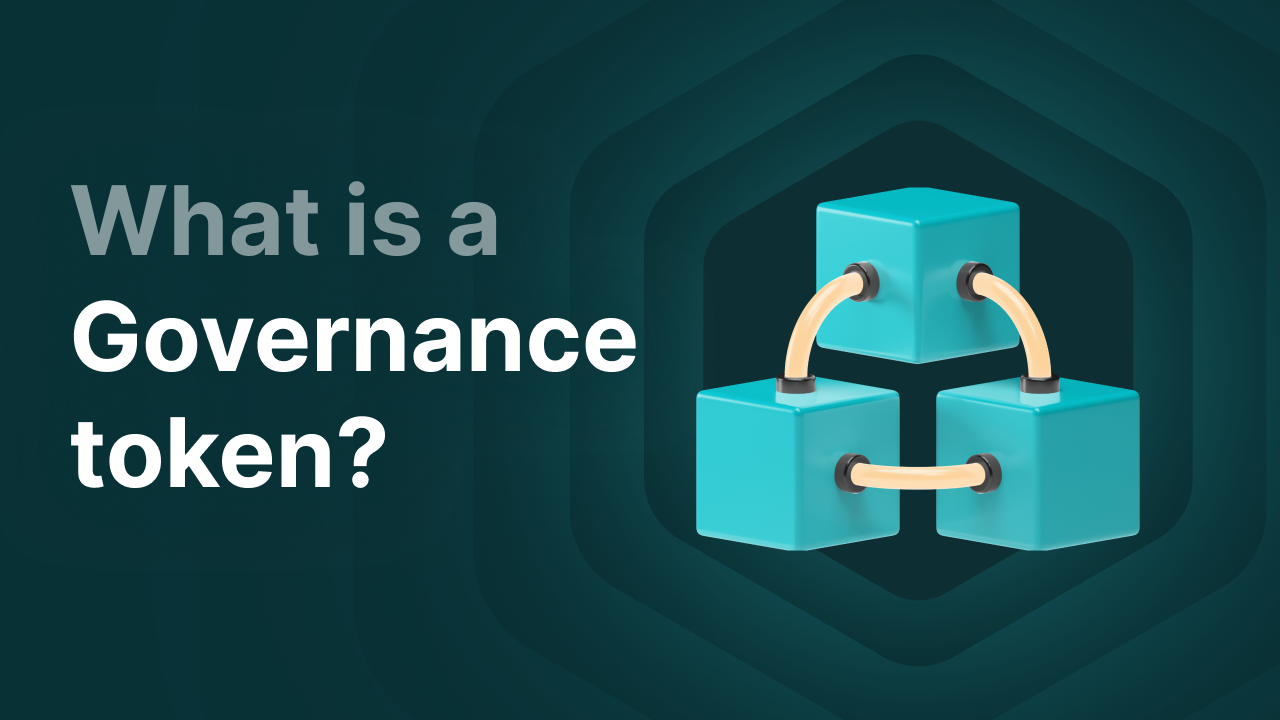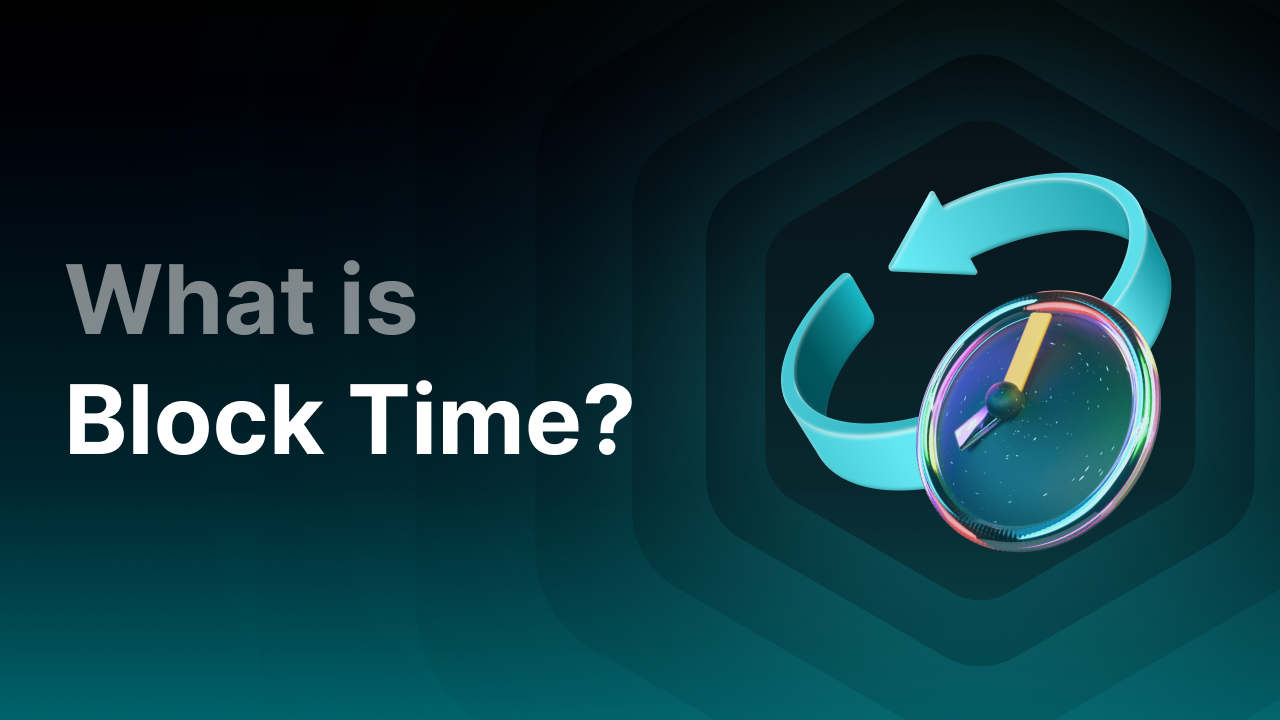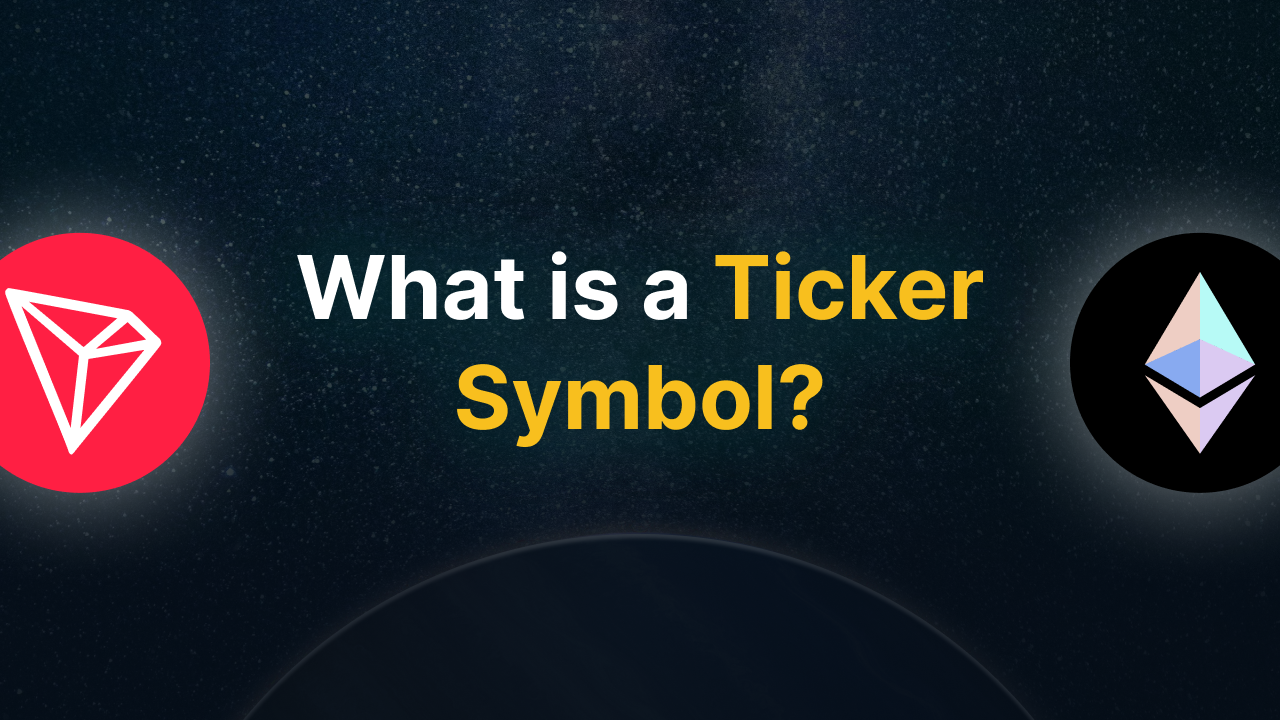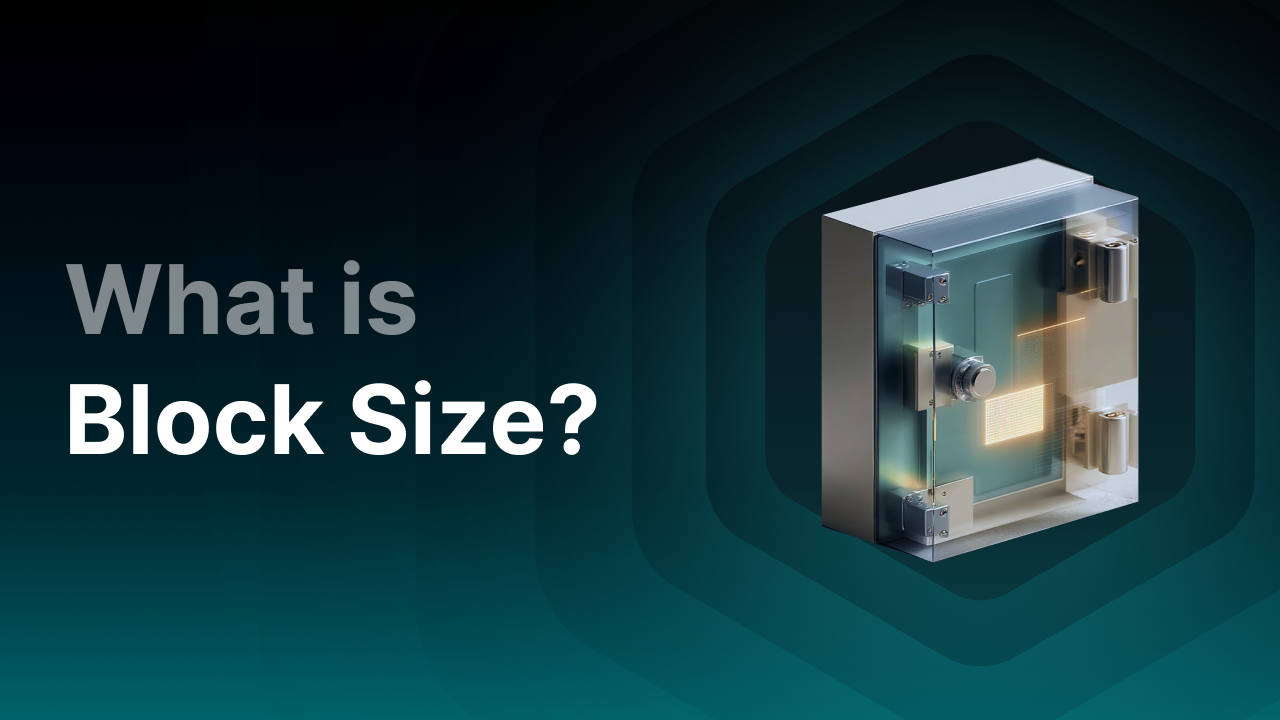Was ist Krypto-Staking und wie funktioniert es?
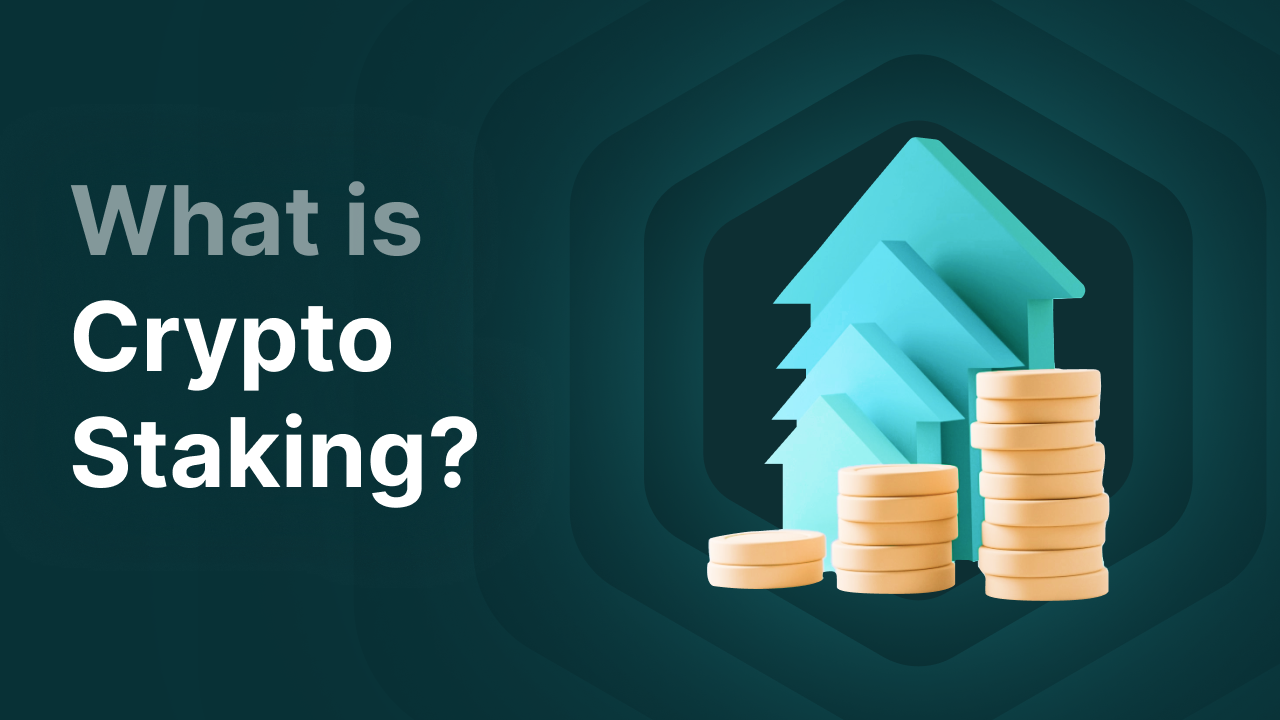
Was ist Krypto-Staking?
Krypto-Staking ist eine Möglichkeit, mit deinen Coins Rendite zu erzielen, indem du deine Krypto zur Verfügung stellst, um das Netzwerk zu sichern. Durch Staking verdienst du passives Einkommen, indem du dem Netzwerk einer Kryptowährung wie Ethereum, Solana oder Polygon hilfst, Transaktionen zu validieren, neue Blöcke zur Blockchain hinzuzufügen und das Netzwerk zu schützen. Als Belohnung bekommst du neue Token. Du musst dafür nicht viel tun, außer anzugeben, dass du deine Coins staken willst.
Man kann es sich wie ein Sparkonto vorstellen. Normalerweise lässt du dein Geld auf einem Sparkonto, um Zinsen zu bekommen. Das ist oft ein niedriger Prozentsatz, den du monatlich oder jährlich erhältst. Auch das ist im Grunde eine Belohnung dafür, dass die Bank dein Geld benutzen darf. Tatsächlich verleiht die Bank dein Geld weiter, zum Beispiel für Hypotheken, oder nutzt es zum Investieren, um weitere Einnahmen zu erzielen. Der Zinssatz ist so gesehen ein Dankeschön.
Krypto-Staking ist ähnlich, aber deine Coins werden dabei nicht verliehen, sondern helfen, das Netzwerk zu betreiben. Der große Vorteil von Staking gegenüber dem Sparen bei einer Bank ist, dass die Staking-Rewards oft deutlich höher sind als Bankzinsen. Allerdings schwanken die Kurse von Kryptowährungen stark. Wenn die Kurse steigen, kannst du zusätzlich Gewinn machen, weil deine Coins mehr wert werden. Aber bei fallenden Kursen kann dein Vermögen auch schnell sinken.
Wichtigste Erkenntnisse
- Staking ist eine Möglichkeit, passiv Einkommen zu verdienen, indem man Krypto einsetzt, um Transaktionen zu validieren und Belohnungen zu erhalten.
- Es gibt verschiedene Formen von Staking, wie z. B. das Einrichten eines eigenen Validator-Nodes, Staking-Pools, zentrale Plattformen (wie Finst) und Liquid Staking.
- Mit Staking sind Risiken verbunden, wie Kursvolatilität, Lock-Up-Zeiten, Slashing und Risiken bei Smart Contracts beim Liquid Staking.
- Staking ist nicht das Gleiche wie Lending: Lending bringt normalerweise mehr Risiken mit sich, weil du deine Coins an Dritte verleihst. Beim Staking läuft alles über das Netzwerk und gilt als sicherer.
Wie funktioniert Krypto-Staking?
Krypto-Staking funktioniert durch das Konsensverfahren Proof of Stake (PoS) oder eine Variante davon. PoS wählt zufällig Validatoren aus, die Transaktionen prüfen und in Blöcke schreiben dürfen. Wenn ein Validator erfolgreich ist, bekommt er eine Belohnung in Krypto. Jeder kann mitmachen und Validator werden, was das Netzwerk dezentral macht.
Wie wirst du Validator? Mit PoS wirst du Validator, indem du deine Coins stakest. Du gibst also an, dass du deine Tokens für eine gewisse Zeit sperren willst – die sogenannte Lock-Up-Periode. Während dieser Zeit kannst du deine Coins nicht bewegen oder verkaufen. Die Dauer hängt von der gewählten Staking-Methode ab. Du kannst sie zum Beispiel für ein Jahr, einen Monat oder eine Woche sperren. Es gibt aber auch Methoden ohne Lock-Up-Zeiten, wodurch du jederzeit verkaufen oder transferieren kannst. Je länger du stakest, desto höher sind in der Regel die Belohnungen. Auch ein hoher Einsatz bringt oft mehr Rewards. In beiden Fällen gilt: Wer viel staket, wird eher ausgewählt, weil man mehr zu verlieren hat und sorgfältiger arbeitet. Falsche Validatoren werden bestraft, indem man ihnen Coins wegnimmt (Slashing).
Staking vs Mining
Krypto-Staking ist eine Methode, Transaktionen dezentral zu validieren. Eine andere Methode ist Mining, die vielen bekannt ist. Beide validieren Transaktionen unterschiedlich. Blockchains, die das Konsensverfahren Proof of Work nutzen, validieren Transaktionen durch Mining. Ein bekanntes Beispiel ist Bitcoin: ein energieintensiver Prozess, bei dem Computer komplexe Aufgaben lösen. Wer zuerst die Lösung hat, darf die Transaktionen bestätigen. Dafür braucht man teure Hardware mit viel Power.
Beim Staking ist das anders. Die Computer müssen nicht dauerhaft laufen, was Energie spart. Stattdessen werden gestakete Coins verwendet. Es wird ein Validator oder eine Gruppe von Validatoren ausgewählt, die die Transaktionen prüfen. Das ist effizienter, da nicht jeder Validator gleichzeitig rechnet.
Möglichkeiten zum Staken von Krypto
1. Direkt staken als Validator mit eigenem Node
Einen eigenen Node zu betreiben, ist technisch anspruchsvoll. Du betreibst einen eigenen Validator und nimmst aktiv am Netzwerk teil. So kannst du die höchsten Rewards verdienen. Der Nachteil: Du brauchst technisches Know-how und oft eine hohe Menge an Coins als Sicherheit – z. B. 32 ETH bei Ethereum. Außerdem muss dein Server immer online sein. Wenn du Fehler machst, wirst du bestraft (Slashing).
2. Staken über einen Staking Pool
Staking über Pools ist sehr beliebt. Du lockst deine Coins ein und stakest über eine andere Node mit. Technisch einfach, oft ohne Mindesteinsatz. Der Nachteil: Du bekommst nur einen Teil der Belohnung und hast weniger Kontrolle.
Wie kannst du mitmachen? Du brauchst eine Wallet wie Metamask, Keplr oder Ledger. Diese Anbieter ermöglichen dir einfachen Zugang zu Staking-Pools.
Tipp: Informier dich gut über den Pool – wie ist der Ruf? Wie viele machen mit? Sind die Rewards realistisch?
3. Staken über zentrale Plattformen
Viele Krypto-Plattformen bieten Staking an, z. B. Finst. Vorteil: Es ist super einfach – du aktivierst Staking in den Einstellungen und bekommst passives Einkommen. Du kannst auch auf mehrere Coins gleichzeitig Zinsen erhalten. Nachteil: Auf dezentralen Plattformen gibt’s oft höhere Renditen.
4. Liquid Staking
Liquid staking ist eine neuere Methode. Du stakest deine Coins, bekommst aber ein Ersatz-Token dafür, das du weiter handeln kannst. So bleibt dein Coin während der Lock-Up-Zeit liquide.
Du kannst über DeFi-Projekte wie Lido teilnehmen. Dort stakest du ETH und bekommst z. B. stETH zurück. Der Wert bleibt gleich.
Beispiel: Du stakest 0,1 ETH bei Lido oder Rocket Pool und bekommst ca. 0,1 stETH oder 0,1 rETH zurück.
Vorteil: Du kannst diese Tokens für andere DeFi-Anwendungen wie Lending oder Yield Farming (Krypto in liquidity pools stecken) verwenden – mehr Ertrag also.
Was passiert beim Verkauf? Wenn du deine Liquid Tokens z. B. gegen USDC verkaufst, bekommt der Käufer das Recht an deinen gestaketen Coins. So wird Missbrauch verhindert. Der Liquid Token ist also ein Eigentumsnachweis.
Liquid Staking ist eher komplex und eher für erfahrene DeFi-Nutzer geeignet.
APY vs APR
Bei Staking sieht man oft APY oder APR. Zum Beispiel: Cardano bringt 2,4 % APY oder Ethereum 1,5 % APR – je nach Plattform. Klingt kompliziert, ist aber easy.
APR heißt Annual Percentage Rate – der jährliche Zinssatz.
Beispiel: Du stakest 1 ETH mit 2,5 % APR. Nach einem Jahr bekommst du 0,025 ETH – also 1,025 ETH insgesamt. Die Belohnungen werden nicht automatisch reinvestiert.
Bei APY ist das anders. APY steht für Annual Percentage Yield – dabei wird automatisch reinvestiert. Du bekommst also Zinsen auf deine Zinsen – Zinseszins!
Je öfter du ausgezahlt wirst, desto schneller wächst dein Einkommen. Je nach Plattform täglich, wöchentlich oder monatlich.
Beispiel: 1 ETH mit 2,5 % APY ergibt nach einem Jahr etwa 0,0253 ETH – also 1,0253 ETH insgesamt. Etwas mehr als mit APR.
Was sind die Vorteile von Staking?
Krypto-Staking bringt viele Vorteile – sowohl für Anleger als auch fürs Netzwerk:
- Anleger können einfach passives Einkommen erzielen – auch ohne viel technisches Wissen.
- Im Gegensatz zu Mining brauchst du keine teure Hardware – ein Handy mit Internet reicht.
- Staking hilft, Blockchains zu sichern, Transaktionen zu validieren und die Dezentralisierung zu fördern.
Was sind die Risiken beim Krypto-Staking?
Natürlich gibt’s beim Krypto-Staking auch Risiken. Hier die wichtigsten auf einen Blick:
- Während der Lock-Up-Zeit kannst du nichts mit deinen Coins machen. In Kombination mit dem volatilen Markt bedeutet das, dass du deine Tokens nicht verkaufen kannst – was zu hohen Verlusten führen kann.
- Böse Validatoren können dazu führen, dass du durch Slashing einen Teil deiner eingesetzten Tokens verlierst. Achte deshalb immer darauf, einen vertrauenswürdigen Staking-Pool zu wählen!
- Beim Liquid Staking besteht immer das Risiko von Fehlern in den Smart Contracts. Diese Protokolle basieren auf Code, und wenn Hacker Schwachstellen finden, kann das zu Verlusten führen.
Krypto-Staking bei Finst
Finst bietet sehr wettbewerbsfähiges und flexibles Staking für deine Coins an. Du kannst bei Finst ganz einfach, sicher und ohne Stress deine Krypto staken.
Mit Staking bei Finst bekommst du:
- Wöchentliche Auszahlungen deiner Belohnungen – so profitierst du vom Zinseszinseffekt.
- Kein Mindestbetrag fürs Staken.
- Keine Lock-Up-Zeiten – du kannst deine Coins jederzeit verkaufen oder versenden.
- Nur ein Klick in der Finst-App, um Staking zu aktivieren.
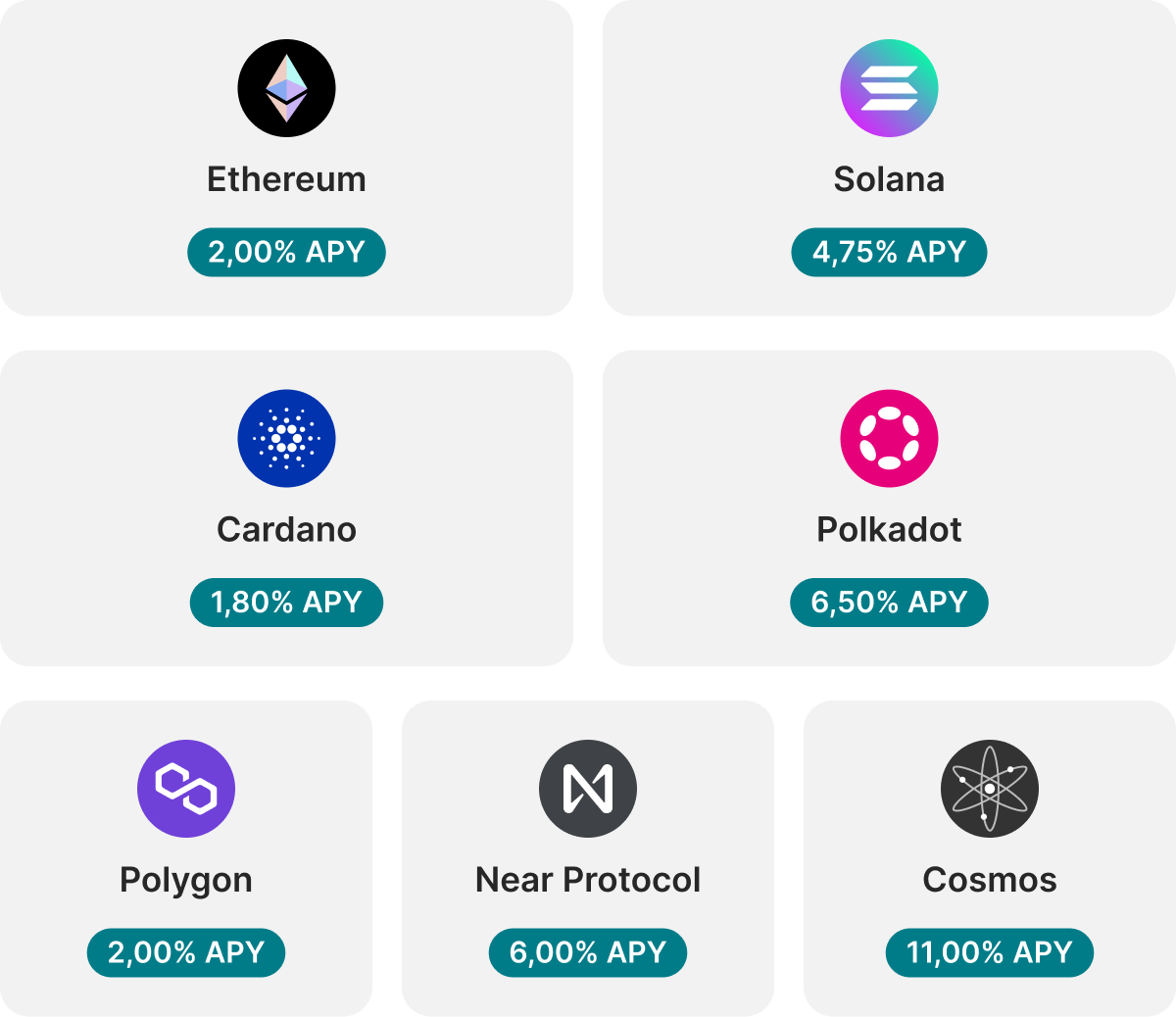
Unterschied zwischen Staking und Lending
Staking und Lending werden oft verwechselt. Beide bringen passives Einkommen – aber auf unterschiedliche Weise.
Beim Staking setzt du Tokens ein, um das Netzwerk zu sichern und Transaktionen zu validieren. Beim Lending verleihst du deine Coins an andere gegen Zinsen – du agierst also wie eine Bank. Das funktioniert über Smart Contracts oder zentrale Plattformen. Du vereinbarst einen Zinssatz, den jemand akzeptiert.
Lending läuft oft über einen Vermittler – also ein zentrales System – und es gibt immer jemanden, der dir das Geld zurückzahlen muss. Das ist der große Unterschied zum Staking. On-Chain-Staking läuft direkt über die Blockchain – egal ob du es selbst machst oder über eine Plattform. Die Auszahlungen kommen automatisch vom Netzwerk und sind dadurch grundsätzlich verlässlicher. Beim Lending ist das Risiko höher, weil du auf jemanden angewiesen bist, der dir das Geld zurückzahlt – und der damit tun kann, was er will. Du hast weniger Kontrolle, bekommst dafür aber oft höhere Zinsen.
Beim Staking gab es bisher kaum große Skandale. Beim Lending sieht das anders aus. Hier ein paar bekannte Beispiele, bei denen auch europäische Anleger stark betroffen waren:
- Celsius Network
- BlockFi
- FTX – Alameda Research
Alle drei haben Kundengelder missbraucht oder schlechte Investitionsentscheidungen getroffen. Milliarden gingen verloren – mit riesigen Imageschäden als Folge.
Fazit
Krypto-Staking ist ein einfacher Weg, passiv Geld mit deinen Coins zu verdienen – ganz ohne hohe Kosten oder die Komplexität von Mining. Ob du direkt stakest, einen Pool nutzt, über eine Plattform wie Finst gehst oder dich für Liquid Staking entscheidest – es gibt Optionen für Anfänger und Profis. Wichtig ist, die Risiken zu kennen: Kursschwankungen, Lock-Ups und technische Schwächen. Im Vergleich zum Lending ist Staking meistens sicherer, weil Belohnungen automatisch vom Netzwerk kommen – ganz ohne Zwischenhändler. Wenn du dich gut informierst und seriöse Plattformen nutzt, kannst du mit Staking das Beste aus deiner Krypto herausholen.
